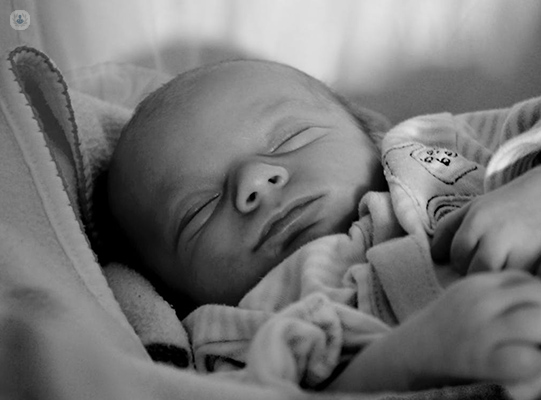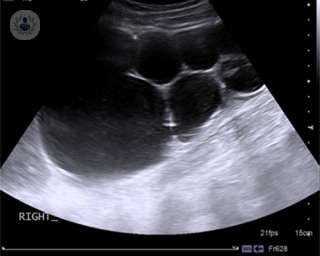Multicystic dysplastic kidney (MCDK)
Diane De Caluwe - Paediatric urology
Created on: 02-20-2018
Updated on: 06-05-2023
Edited by: Sophie Kennedy
What is a multicystic dysplastic kidney?
A multicystic dysplastic kidney (MCDK) is a relatively common condition in which a kidney does not develop properly in the womb, instead consisting of cysts and scar tissue. It does not function properly, but is unlikely to cause a problem as long as the other kidney is healthy – in most cases one functioning kidney can do the job of two. The multicystic dysplastic kidney usually disappears on its own (involution), but if this does not happen, or if it is particularly large, treatment may be necessary.
If the condition affects both kidneys, the pregnancy will not come to term, as the kidneys are responsible for producing amniotic fluid, which is essential for a normal pregnancy. MDK has no association with the similarly named polycystic kidney disease (PCKD).

What are the symptoms of a multicystic dysplastic kidney?
Multicystic dysplastic kidneys do not generally cause symptoms. Instead, they are usually found on routine ultrasound scans. Once diagnosed, they will usually be monitored by the baby’s doctors to make sure it does not cause any problems.
Which medical tests are used to diagnose a multicystic dysplastic kidney?
Ultrasound scans are typically the first test for multicystic dysplastic kidneys. However, they can appear similar to blocked kidneys or even tumours, so the doctors may run CT, MRI, and/or nuclear scans to rule out these other possibilities.
What are the causes of a multicystic dysplastic kidney?
The majority of cases of multicystic dysplastic kidney are caused by spontaneous events in the development of a baby in the womb. The kidneys begin to develop at around 5-6 weeks into the pregnancy, but there are a myriad of steps in their development, and if even one goes wrong, it can result in an abnormal kidney.
In rare cases, multicystic dysplastic kidneys run in families, indicating a genetic trait. There are also theories that exposure to certain viruses or drugs at a critical stage of development can also increase the risk of the condition.
Treatments for a multicystic dysplastic kidney
In most cases, no treatment is needed for a multicystic dysplastic kidney as the other kidney does the work of both and the multicystic dysplastic kidney usually regresses and disappears over time. It is more common than you might think to have only one kidney – multicystic dysplastic kidneys occur in around 1 in 3,600 births.
Occasionally a multicystic dysplastic kidney will fail to involute, and may even enlarge and cause problems. In such cases, the doctor may recommend a nephrectomy (a surgical procedure to remove the problematic kidney).
Which type of specialist treats multicystic dysplastic kidney?
Paediatric urologists specialise in treating problems in the urinary system in children, including multicystic dysplastic kidneys.


